Seagate FireCuda 540 review
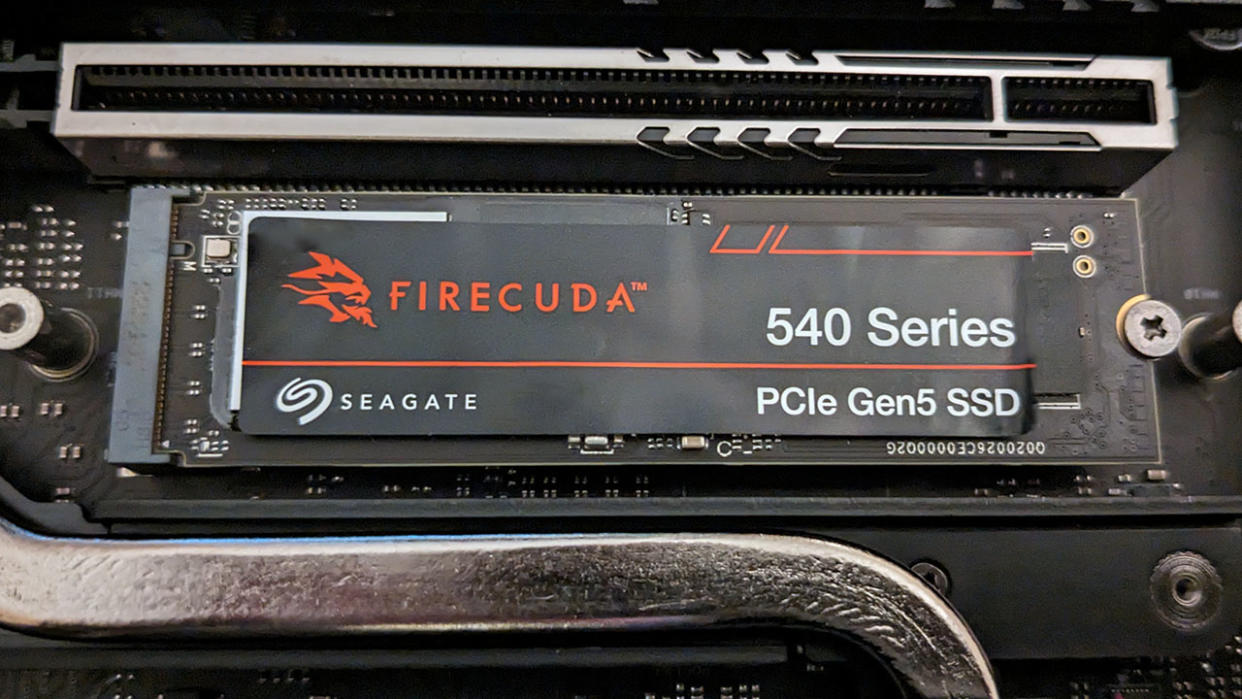
PCIe 5.0 SSDs have been teased for what seems like an eternity. In spite of all the chat, relatively few drives are available, even less so from the big name SSD makers. Seagate belongs in that category, and its FireCuda 540 leads the Seagate charge into the brave new world of PCIe 5.0 SSDs.
For now, that new world is a very expensive one to buy into. All PCIe 5.0 SSDs carry a massive price premium over PCIe 4.0 drives. There are many high performance 2TB PCIe 4.0 drives at well under half the price of the 2TB FireCuda 540, and straight away that makes it difficult to recommend. But that's the way of things with new tech: Early adopters always pay a premium.
Pricing is what it is. In time, the price of PCIe 5.0 drives will certainly drop, and when that happens, drives like the Seagate FireCuda 540 will become a lot more compelling.
Seagate is positioning the FireCuda 540 as an all round option. There are obvious gaming benefits, including support for DirectStorage, but it also carries an excellent endurance rating and comes with three years of data recovery support. That kind of support and peace of mind will appeal to professionals, and they're less likely to worry over price if you think of Seagate's impressive warranty as a service.
This review unit doesn't include a heatsink so it's imperative the motherboard has some kind of integrated cooling solution. If not, then you risk throttling, or possibly long term damage if you don't have good case airflow. And even if your motherboard has M.2 cooling support, you should not to install any high performance SSD directly underneath a graphics card.
Seagate FireCuda 540 specifications
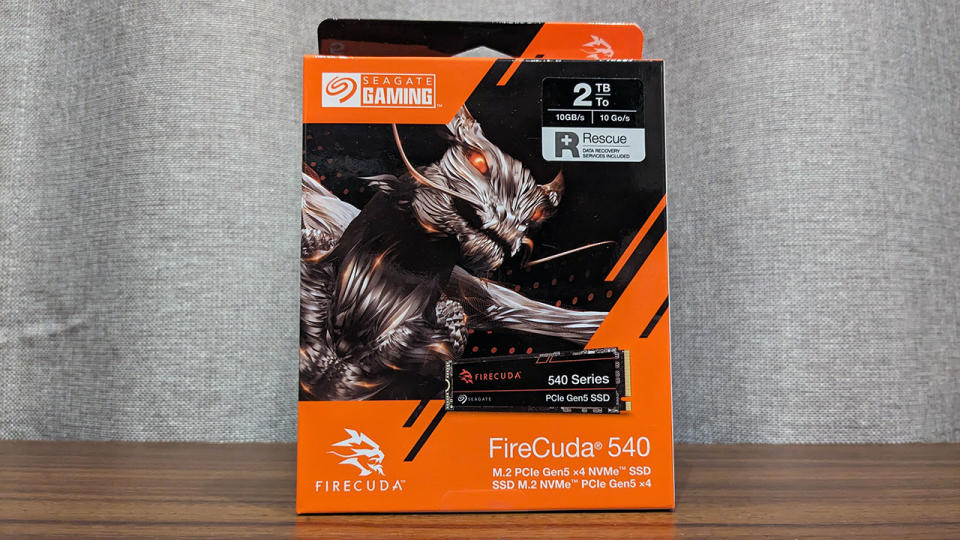
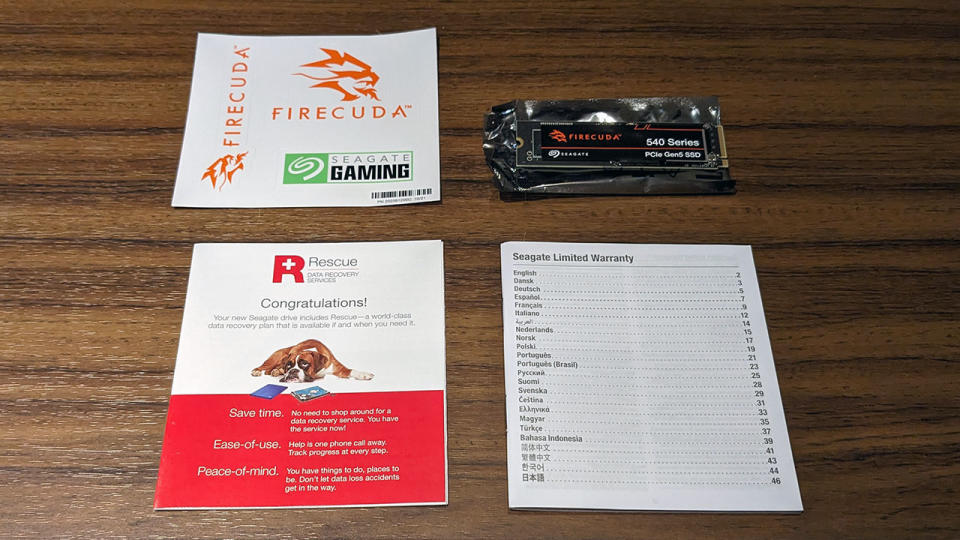
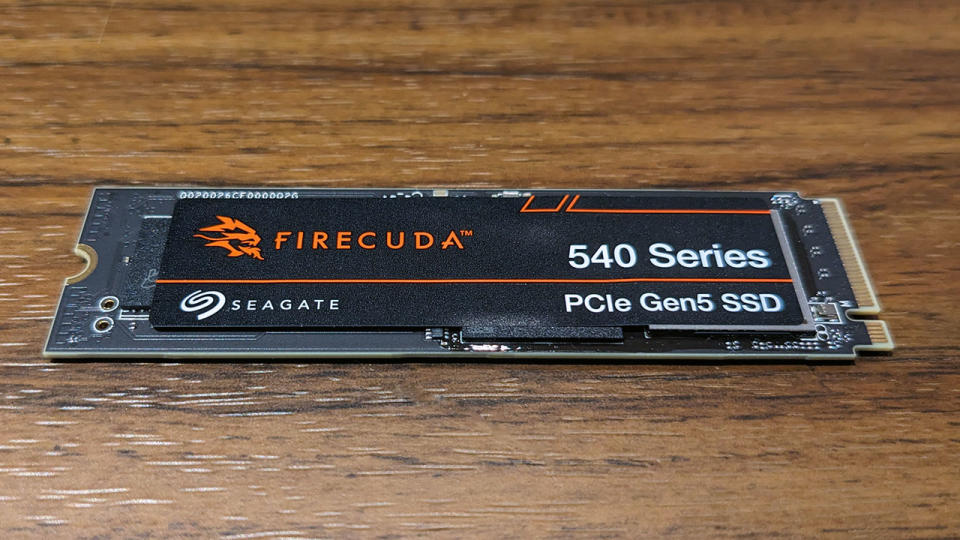

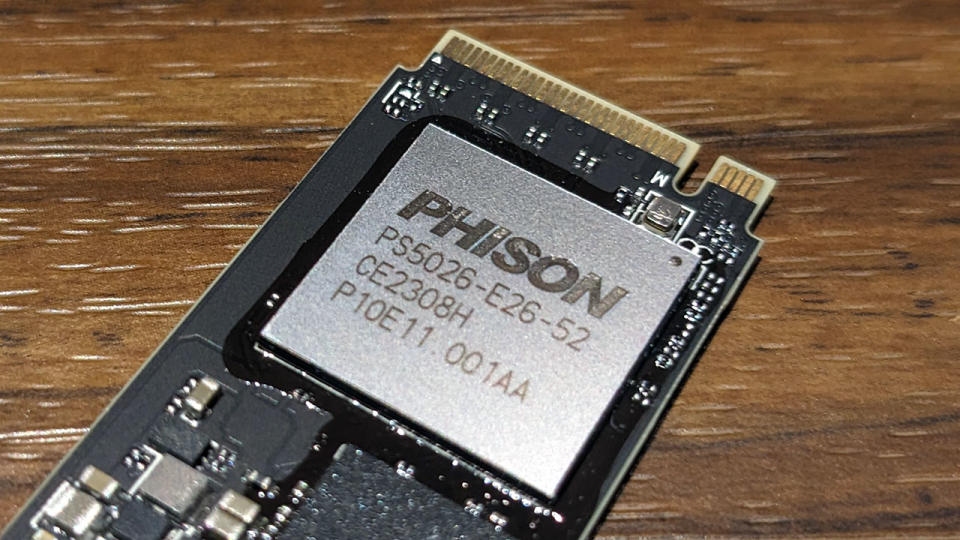
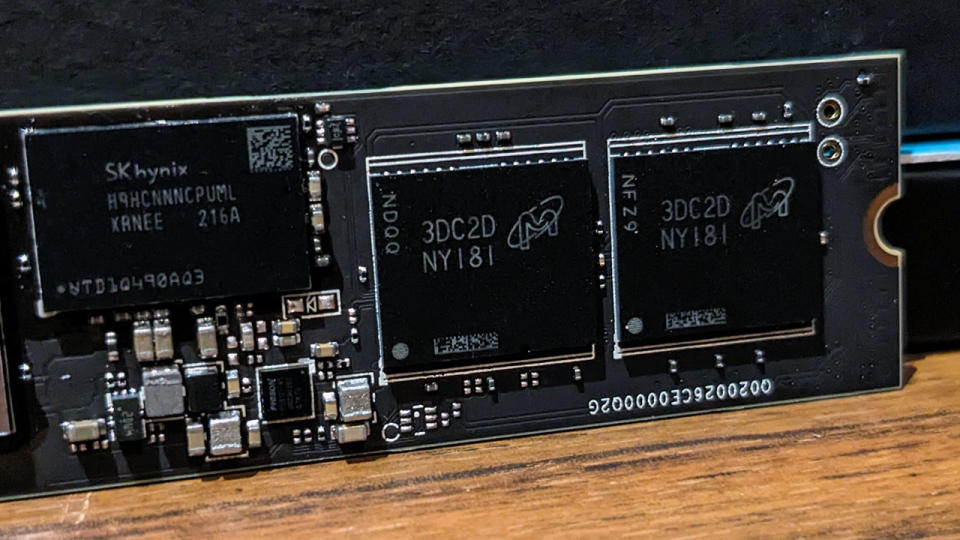
Seagate FireCuda 540 2TB specifications

Interface: PCIe 5.0 | NVMe 2.0
Controller: Phison PS5026-E26
Memory: Micron 232-layer 3D TLC
Capacity: 2TB (also 1TB available)
Seq reads: 10,000 MB/s
Seq writes: 10,000 MB/s
Endurance: 2,000 TBW
Price: $299.99 | £314.90 | AU$649
The FireCuda 540 is a PCIe 5.0 x4 M.2 2280 NVMe SSD. The 2TB version is rated for up to 10,000 MB/s sequential reads and 10,000 MB/s writes. That's a bit less than what some other Phison E26 drives are rated for. This pre-release Crucial T700 is one such example. The FireCuda 540 is rated for 1.49 million and 1.5 million random read and write IOPS per second.
The Firecuda 540 includes the latest and greatest 232-Layer Micron TLC NAND plus 4GB of LPDDR4 memory. Seagate opted not to pursue maximum performance at all costs in favor of a good blend of performance and reliability, and this is one of the major points in the FireCuda 540's favor.
With a 2000 TBW endurance rating for the 2TB drive, Seagate is clearly confident in the reliability of the drive. Add to that a five year warranty with a three year data rescue plan and this is a drive that will not only appeal to gamers, but professionals and networked storage users alike.
It's be remiss of me not to mention Seagate's software. DiskWizard is a reskinned version of Acronis True Image, which makes it a simple cloning and backup tool that adds a good bit of value. Seagate's SeaTools app also deserves a mention. It provides S.M.A.R.T. monitoring, health information, self-testing and erase functions among others.
Seagate FireCuda 540 performance

Before getting to the benchmark results, It's important to note we are using the FireCuda 540 and all the other listed drives as an OS drive, which means benchmark performance can be compromised by whatever Windows feels like doing in the background at any given time.
Some of these results will be faster if they were to be tested using the 540 as a secondary drive, but we want to get a sense of the real-world performance that you're likely to get out of a PCIe 5.0 system. After all, who's going to fork out all the money for a new drive and not have it right at the heart of their rig?
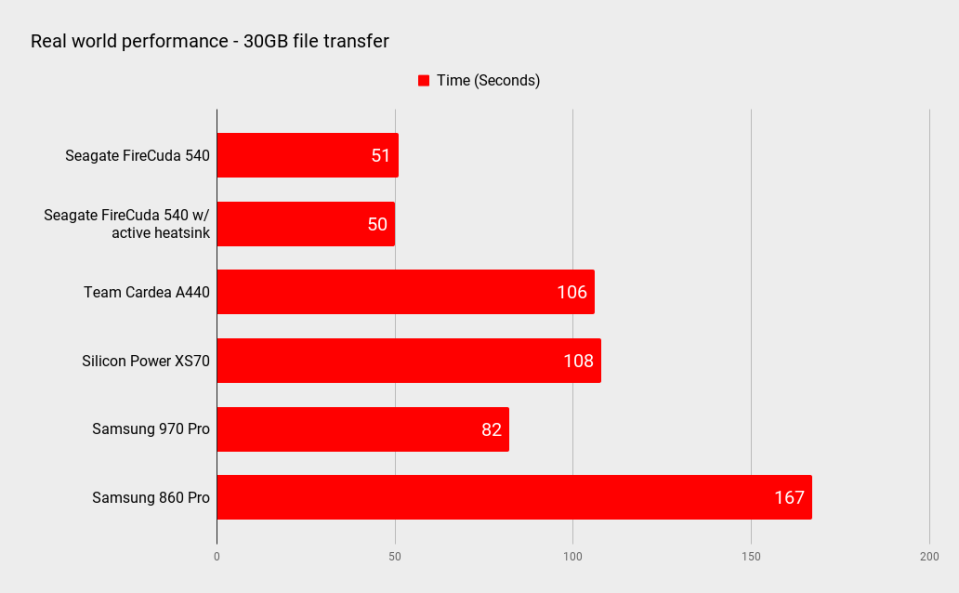
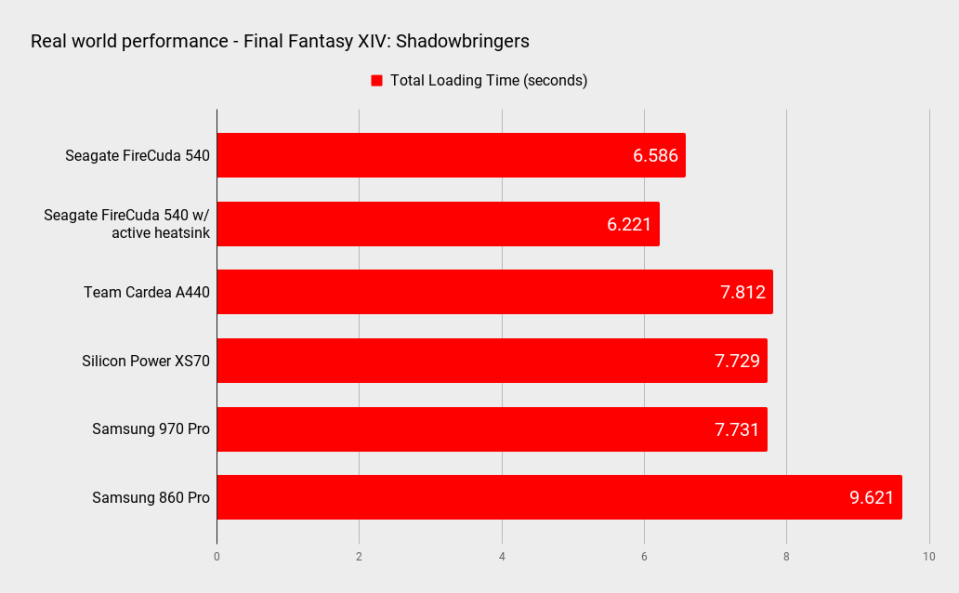
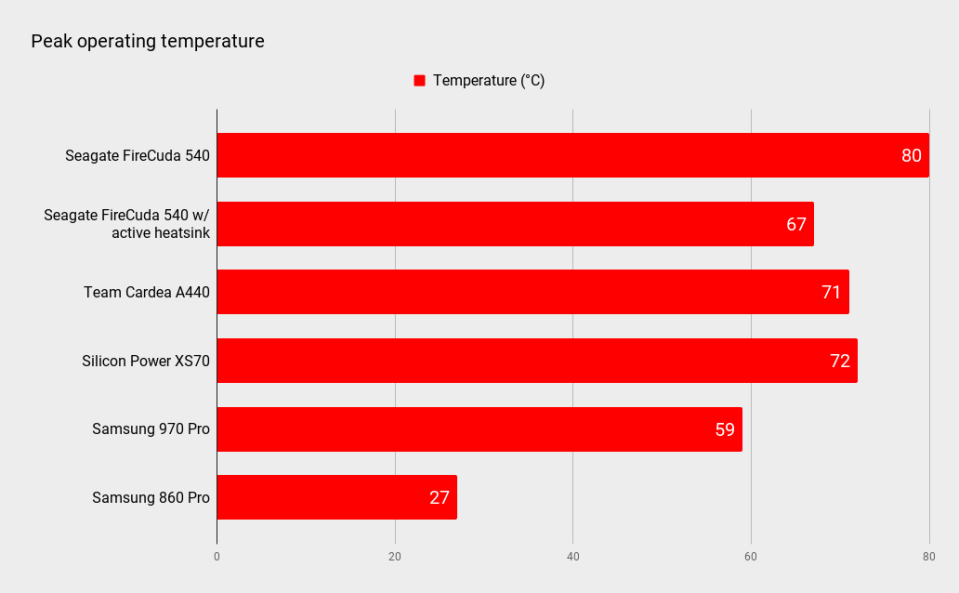
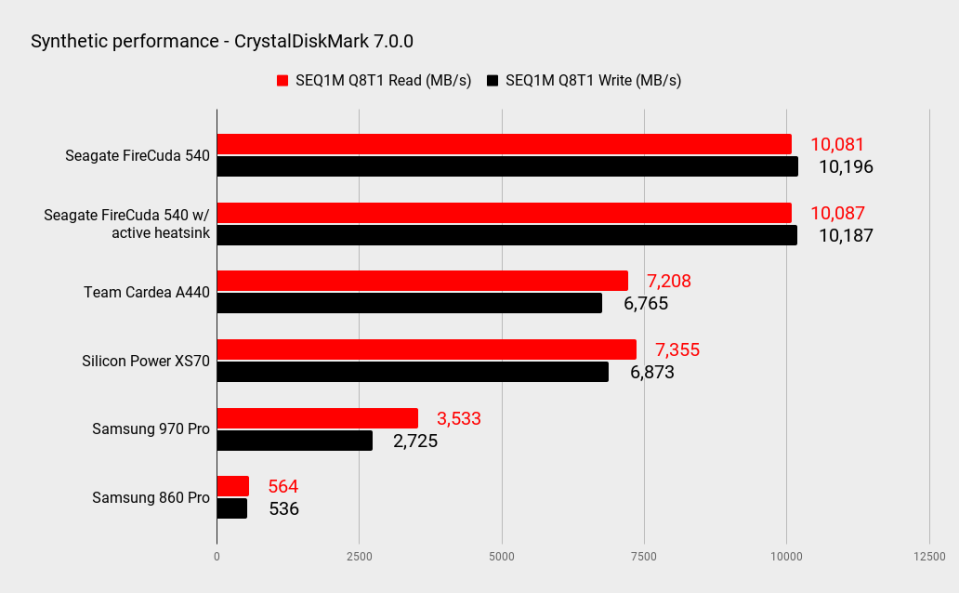
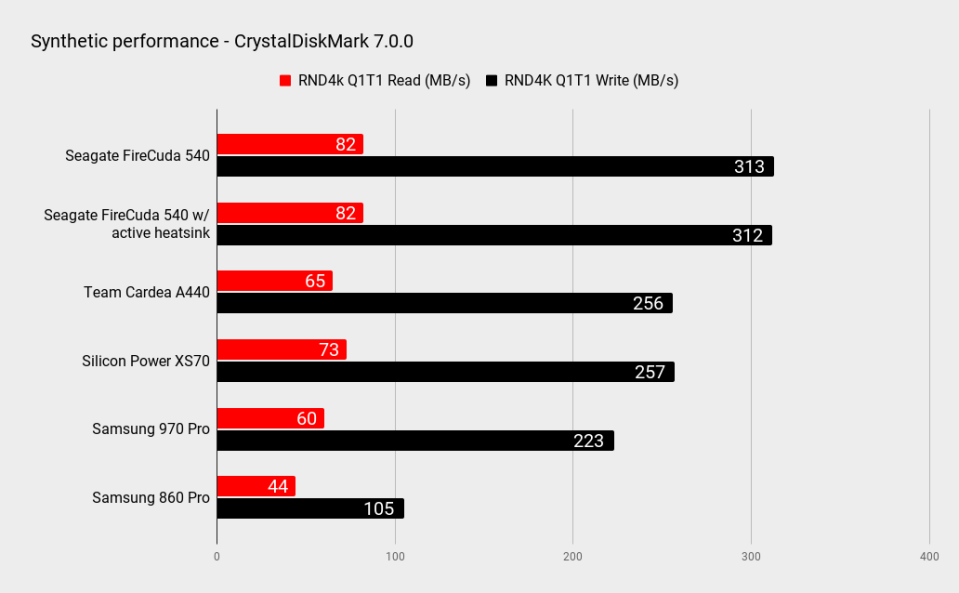
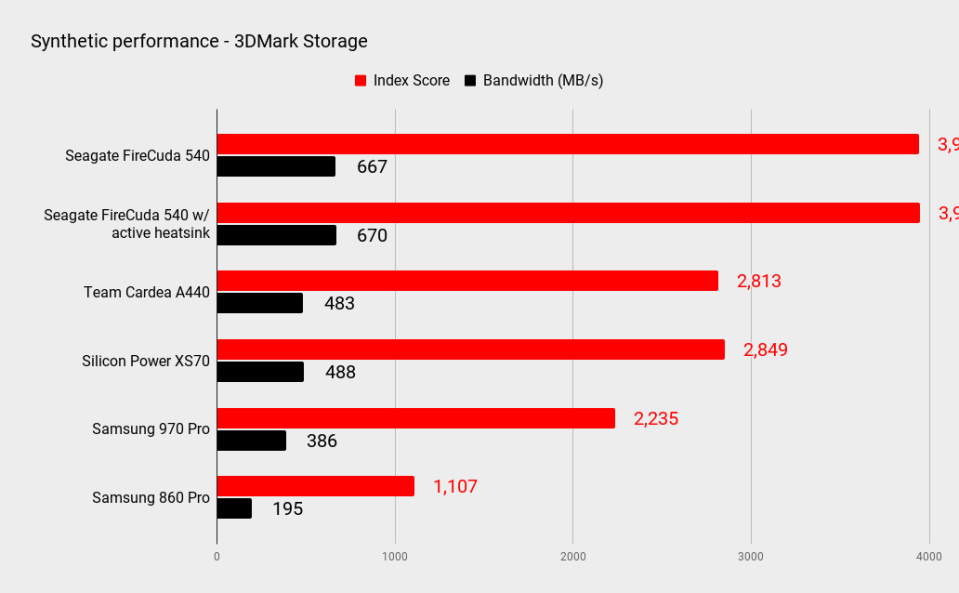
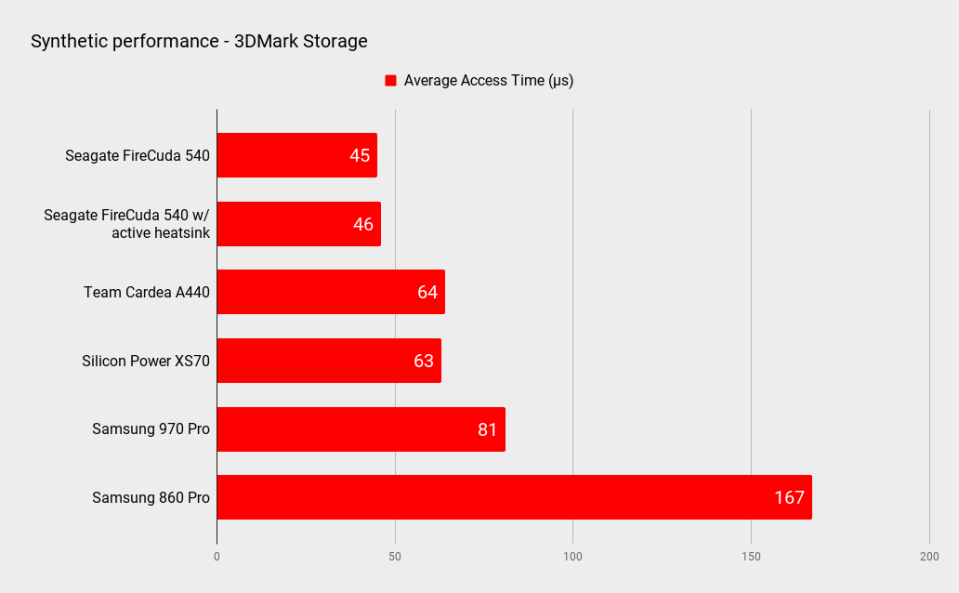
The performance of the FireCuda 540 is a bit of a mixed bag. There's a reason vendors like to push sequential performance as the most important measure of an SSD's performance. The FireCuda does really well here. The superior controller, 232-layer NAND, DRAM and cache all give the FireCuda 540 a huge advantage over previous generation drives in sequential performance and internal file transfer speed. Simultaneously reading and writing 30GB made up of over 25,000 files in 50 seconds is impressive.
PC Gamer test rig
Motherboard: ASRock Taichi X670E
CPU: AMD Ryzen 9 7950X
Cooler: Corsair H100i RGB
Memory: G.Skill Trident Z5 Neo DDR5-6000
PSU: Seasonic Prime TX 1600W
Chassis: DimasTech Mini V2
Monitor: Dough Spectrum ES07D03
But sequential performance is only part of the story. The FireCuda still outperforms PCIe 4.0 drives in random tasks, but not by anywhere near as much as you'd maybe hope given the price differential. And when it comes to the real perception of responsiveness, you really won't notice any difference.
The game load times look good for the FireCuda 540 but I'll leave it up to you to decide whether a second or two here or there is worth the premium price being asked for the FireCuda. I'd say its not worth it. Not yet, anyway.
It's been said many times that PCIe 5.0 drives run hot. My ASRock X670E Taichi motherboard comes with a fairly standard integrated heatsink, but I took the liberty of testing the drive with ASRock's Blazing M.2 heatsink, which includes a small embedded fan. That took 13°C off of the peak temperature, but surprisingly it had little effect on the actual performance of the drive, probably because the standard Taichi heatsink does just enough to prevent it from throttling, reaching 80°C.
You really will need to have good case airflow with the FireCuda 540, though. I'd keep an eye on its temperatures with the Seatools app or with something like HWInfo.
Seagate FireCuda 540 analysis

Buy if...
✅ You must have a mega fast SSD: If you're rocking a high end rig and have cash to splash, I certainly won't argue with a desire to buy a high performance SSD to match with it.
✅ You do a lot of large file transfers: The 2000 TBW rating of the 2TB Seagate FireCuda 540 is excellent. It means you can write over 1TB per day to the drive for five years.
Don't buy if...
❌ You are on a budget: PCIe 5.0 drives carry a huge price premium over PCIe 4.0 drives. Save your money and go for something cheaper.
Computer hardware marches ever on. Within reason, we all seek the latest and greatest hardware to boost the performance of our rigs, but the latest and greatest comes at a cost, and in the case of PCIe 5.0 SSDs, that cost is pretty hard to stomach right now. But we said the same thing when PCIe 4.0 drives launched, and look at how they have plummeted in price.
At well over twice the price of the best PCIe 4.0 drives, PCIe 5.0 SSDs are a tough sell. Seagate is not alone here. They're all too expensive. A look at the few PCIe 5.0 drives that are available puts them all around the same price. So in relative terms, at $299 the 2TB FireCuda 540 isn't unreasonably priced.
But NVMe SSDs have hit something of a performance plateau. I don't mean in terms of benchmark results, but in terms of real world perception. The first SSDs destroyed hard drives, NVMe drives destroyed SATA drives, though to a lesser extent. PCIe 5.0 drives are now so fast, is there a real benefit to owning one over a PCIe 4.0 drive? Sure, if you shuffle terabytes of files around, but I'd say a typical gamer doesn't do that all too often.
Then there are the cooling requirements. Even the best passive cooling struggles to keep hot M.2 drives under control.
In time, the price of the Seagate FireCuda 540 will fall. It's an absolute certainty. And it really needs to if we're to recommend it.
However, if you're prepared to live with not insurmountable cooling compromises, you'll be rewarded with awesome levels of performance. If your system costs thousands of dollars, then a couple of hundred for superior SSD performance won't be an unreasonable ask.
In time, the price of the Seagate FireCuda 540 will fall. It's an absolute certainty. And it really needs to if we're to recommend it. Depending on how it performs against the competition, including those with upcoming non-Phison controllers, the FireCuda will need to be reevaluated. For now, stick with a high-performance PCIe 4.0 drive like Seagate's own FireCuda 530, which is one of my favorites.
In six months time, maybe we'll be able to recommend the FireCuda 540 in terms of value, as well as performance, but for now it's a real struggle.

